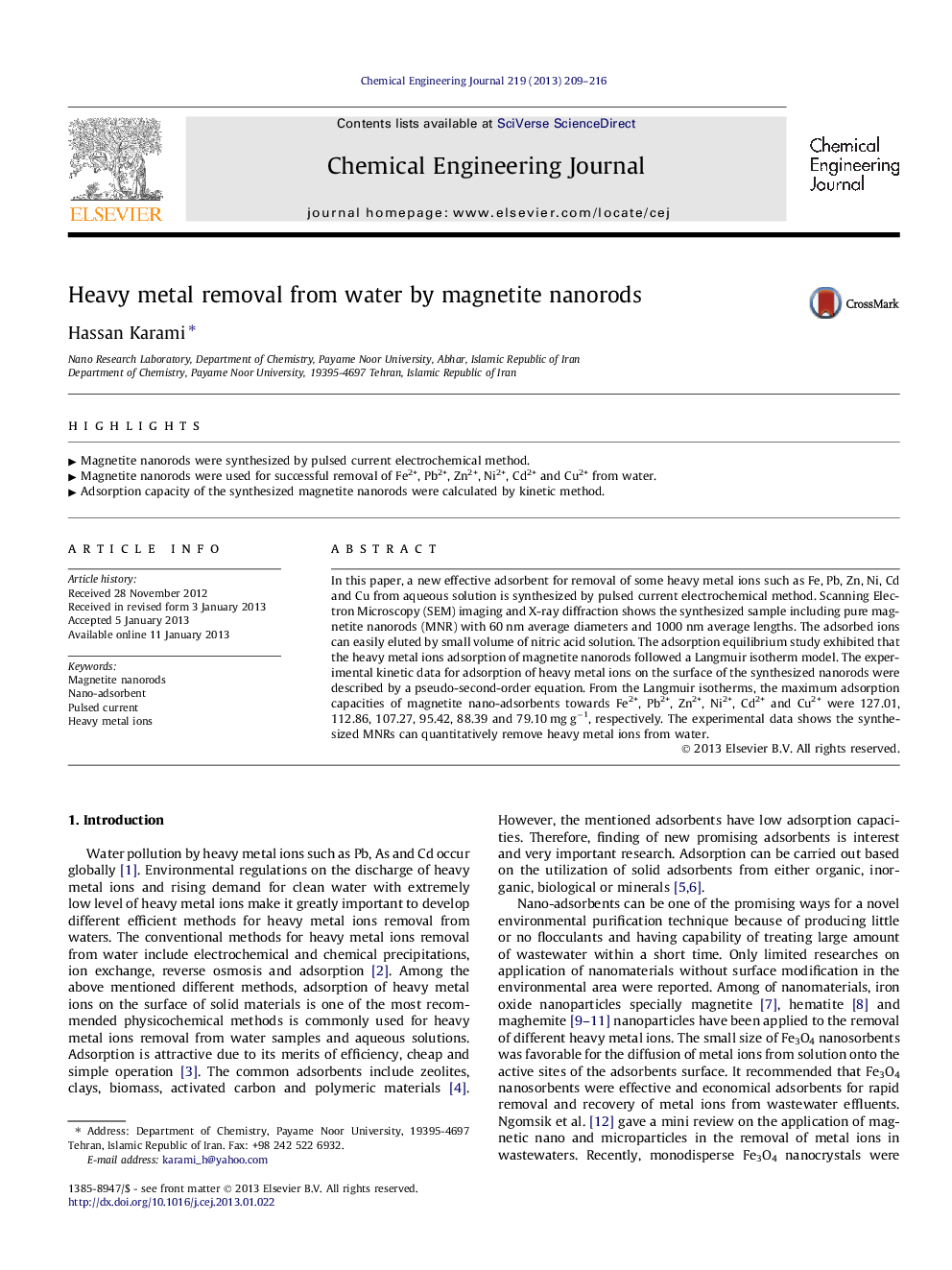| Article ID | Journal | Published Year | Pages | File Type |
|---|---|---|---|---|
| 148886 | Chemical Engineering Journal | 2013 | 8 Pages |
In this paper, a new effective adsorbent for removal of some heavy metal ions such as Fe, Pb, Zn, Ni, Cd and Cu from aqueous solution is synthesized by pulsed current electrochemical method. Scanning Electron Microscopy (SEM) imaging and X-ray diffraction shows the synthesized sample including pure magnetite nanorods (MNR) with 60 nm average diameters and 1000 nm average lengths. The adsorbed ions can easily eluted by small volume of nitric acid solution. The adsorption equilibrium study exhibited that the heavy metal ions adsorption of magnetite nanorods followed a Langmuir isotherm model. The experimental kinetic data for adsorption of heavy metal ions on the surface of the synthesized nanorods were described by a pseudo-second-order equation. From the Langmuir isotherms, the maximum adsorption capacities of magnetite nano-adsorbents towards Fe2+, Pb2+, Zn2+, Ni2+, Cd2+ and Cu2+ were 127.01, 112.86, 107.27, 95.42, 88.39 and 79.10 mg g−1, respectively. The experimental data shows the synthesized MNRs can quantitatively remove heavy metal ions from water.
► Magnetite nanorods were synthesized by pulsed current electrochemical method. ► Magnetite nanorods were used for successful removal of Fe2+, Pb2+, Zn2+, Ni2+, Cd2+ and Cu2+ from water. ► Adsorption capacity of the synthesized magnetite nanorods were calculated by kinetic method.
